The Contax RTS is a camera I’ve now had two experiences with. In fact, most of the content of this review was written around the time of first contact with one. That earlier version of the review never saw the light of day, as my experience with the thing didn’t exactly turn out as planned.
The first time I shot a Contax RTS it was after borrowing one from London Camera Exchange in Worcester. It had been winking at me from one of their shelves for quite some time before me and Gareth finally had a conversation about me borrowing it to review.
It was early last summer I took home. I shot a roll of E100 with it with quite high expectations – there was certainly nothing visibly wrong with the camera. I soon got the results back, and found it had a light leak that had impacted all but a few of the photos. I didn’t mention the camera at the time, but I did talk about the results in a different context here.
Despite the issue, I had quite enjoyed the camera, and was a little bit disappointed that I’d not been in a position to finish writing and publish the review. The camera went off for repair, but for reasons I can’t quite remember I wasn’t able to shoot it again – I think it was sold before I had a chance to borrow it again… One way or another, it meant this review was to lay dormant in my notes on my iPhone until I could borrow or buy another one.
Again, I can’t quite remember how it transpired, but at some point I got chatting to Jeremy North about this. Apart from his interest in a couple of horrible Olympus point & shoot cameras, Jeremy has pretty good taste when it comes to photography kit. Part of this good taste is his Contax fanaticism, and part of that is his Contax SLR and lens collection. I’m not sure how many he has, but the Contax RTS is one one of them. Soon later I was in possession of the Camera you see in the pictures here.
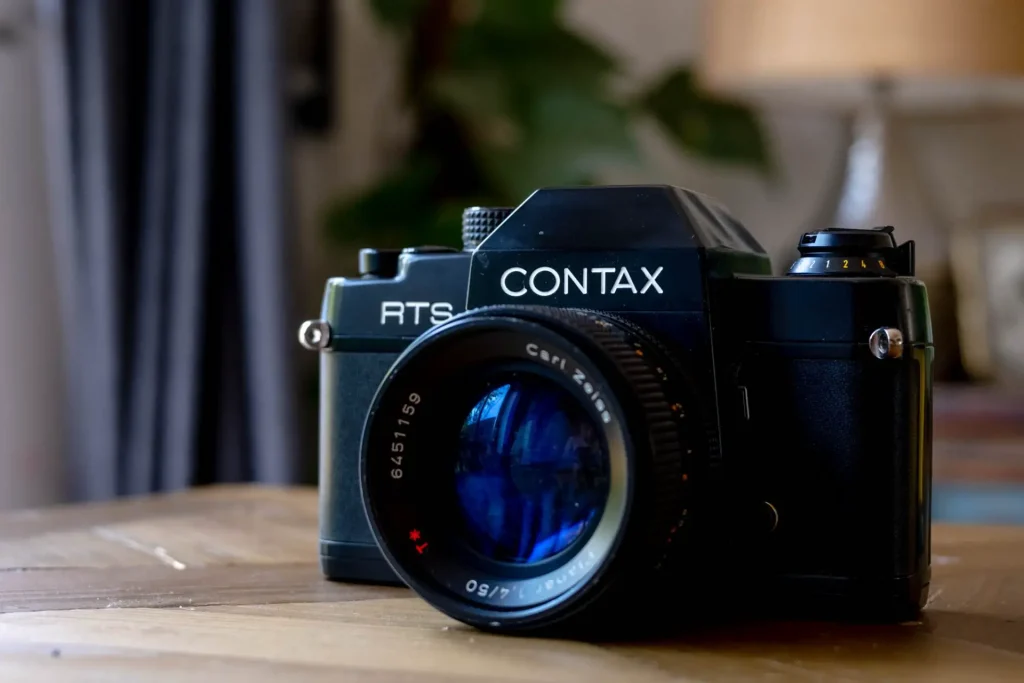
Thanks for the loan Jeremy, and thanks Frazer for letting Jeremy talk you into delivering it to me.
The Contax RTS Review
The Contax RTS is a manual focus, aperture priority and full manual exposure SLR. The first thing that stuck me about it is how it feels every bit a Contax camera. If you’ve ever held a Contax from, I dunno, the 70s-90s, you might know what I’m talking about. Somehow all the ones I’ve handled just feel like they’re made out of thick, solid material – the RTS is no exception. Of course, this speaks nothing of what contained within – which as a fully electronic camera – I’m reliably informed can be a little prone to failure.
The shutter button
Both cameras I’ve tried have been working fine (at least apart from the light leak in the first one). In fact, I’d go as far as to say that the Contax RTS feels veritably eager to function. I’ve not used the word eager to describe a camera for a few years – it used to be a word I applied to point & shoot cameras that had hair-trigger shutter buttons. This thing probably has the most hair-trigger shutter of any camera I’ve ever used. It achieves this by having some sort of electromagnetic shutter release – the slightest touch of the shutter button and it feels like it has maniacally snatched the photo from the world in front of it.
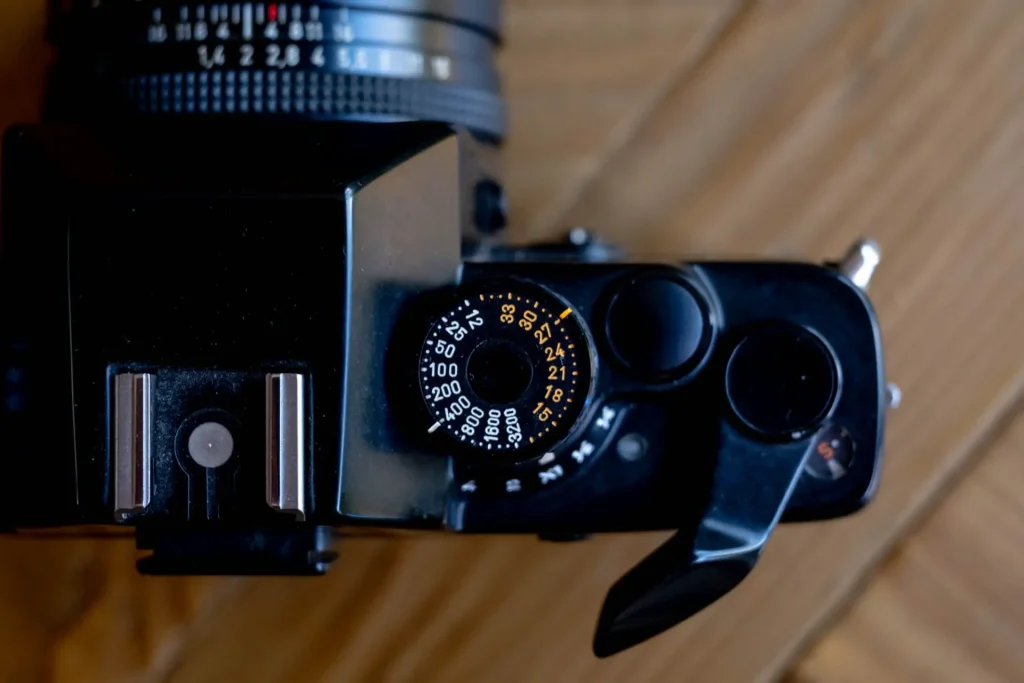
Exposure control
In terms of the complete lack of shutter lag this camera offers, I really can’t fault it. The problem with this system is that it doesn’t offer any sort of exposure lock. With cameras that do have a half-press shutter button, often holding the half-press allows the exposure to be locked and the photographer to reframe.
That’s not the case with the Contax RTS – if you’re shooting in AE, you point the camera at you want to frame, and that’s the exposure you get. Any adjustment to it needs to be applied by either switching to manual, or using the exposure compensation dial.
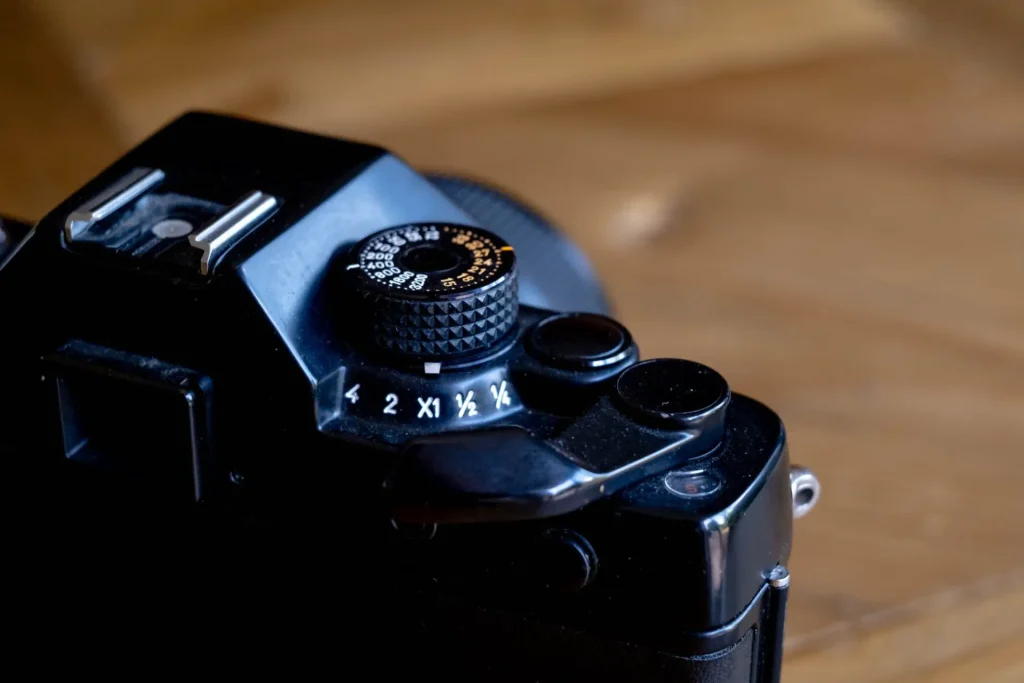
Contax RTS Control layout
One thing that I think makes the Contax RTS quite interesting, is the control layout. Unlike a lot of SLRs that have the shutter speed control dial on the right hand side of the camera, the RTS has its shutter dial on the left hand shoulder. There could be an argument made for this allowing the shutter speed to be changed easier with the camera to the eye. I have certainly found this to be the case.
What’s also quite pleasing about the control layout is that in AE, the exposure compensation is also easy to adjust. The great big dial in the right hand shoulder is is turned quite readily with a thumb and forefinger. You just have to make sure that forefinger doesn’t go near the shutter at the same time, as it really is very easy to trigger the release with the lightest touch.
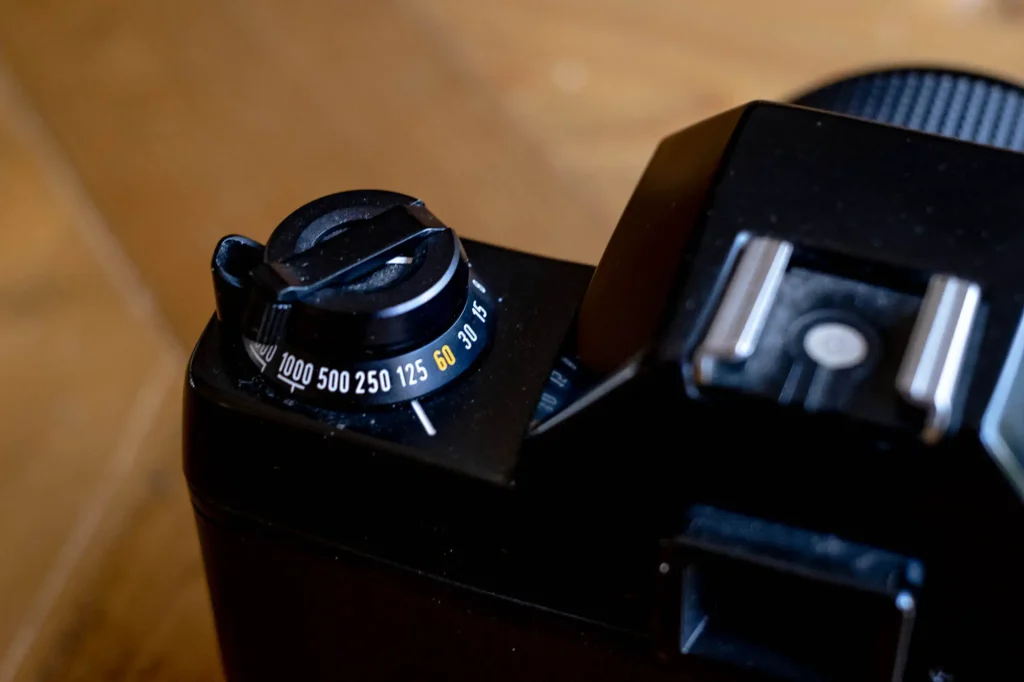
The meter and viewfinder
What’s otherwise quite interesting about the way the Contax RTS works is the way the light meter is activated. Rather than a light meter reading being displayed at half press (there really is nothing of the sort on this camera if I hadn’t made that clear enough?!) the meter is activated by pressing a large button on the front right hand side of the camera.
Press this button and little LEDs in the viewfinder light up next to a needle along the right hand side of the view. Match the needle to the LED for correct exposure in manual mode, and in aperture priority AE the LEDs just show the chosen speed. The viewfinder also shows the selected aperture across the top of the view, unfortunately I found this a little difficult to read without a good source of light at the top of the frame.
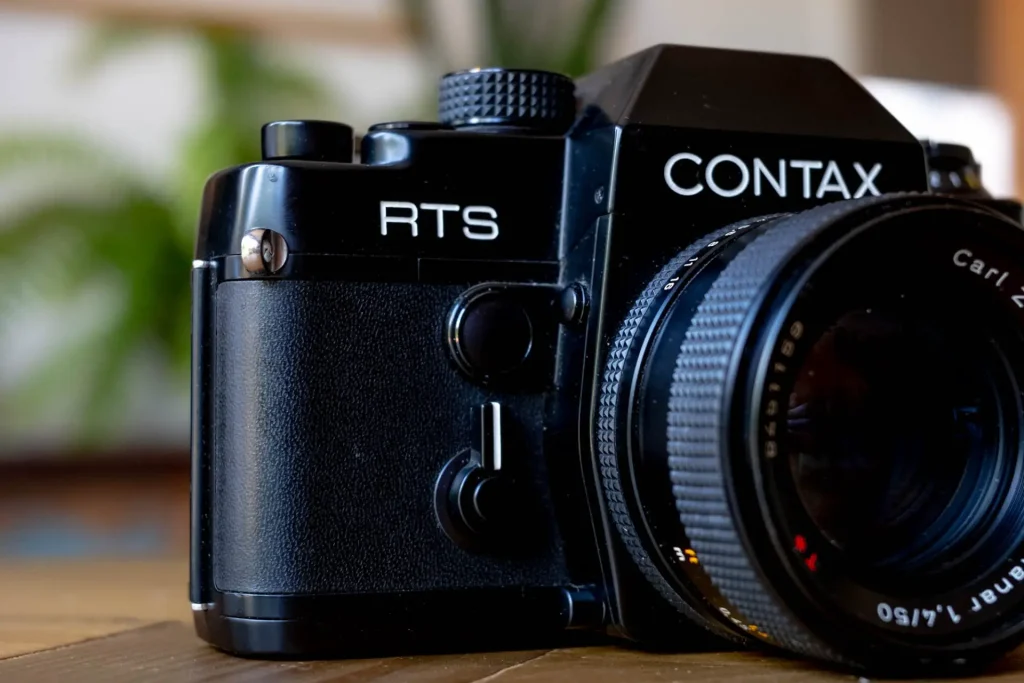
Framing and focusing
I found framing and focusing fairly easy for the most part. The viewfinder is bright enough and the microprism focusing aid is pretty good – though you do need to have your eye square to the viewfinder else I found the patch turned into to a circle of dark spots. Personally, I also tend to prefer a split-prism, I find micro-prisms less universally useful as they can make focusing on smaller subjects a lot harder in my experience. Your mileage may vary.
Other Contax RTS features
The Contax RTS also has mirror lock up, DOF preview and self-timer levers on the front of the camera. I don’t really make use of these features, and haven’t whilst I’ve borrowed either of the copies of this camera – there didn’t appear to be anything unique or unusual about the way they worked though.
Some Contax RTS photos
Possibly the main attraction to any Contax/Yashica mount SLR for me is the Zeiss lenses. This era of Zeiss lenses are really quite special – and to say they appeal to me would be a fairly large understatement. Despite this, I have long resisted the urge. Quite rightly, the lenses are all that cheap – and I just don’t think I could swallow the investment needed to find myself with a full set.
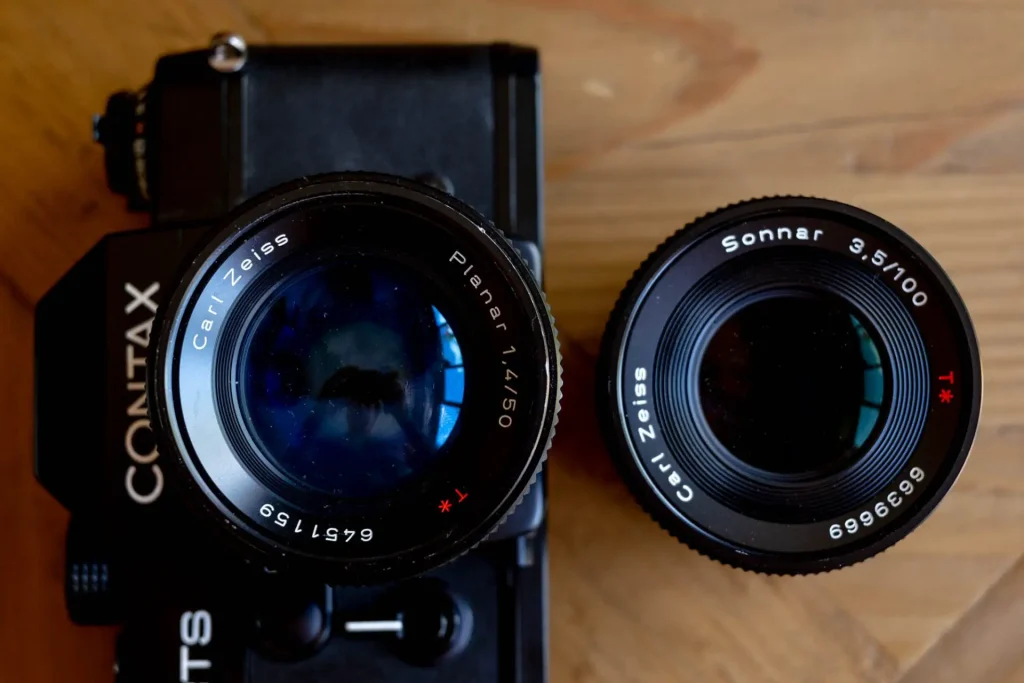
It’s been nice dipping a toe though, and I might yet see if I can sweet-talk Jeremy I to a longer loan of just the 100mm Sonnar as that lens really have interested me. It’s both a Zeiss Sonnar, and I’m finding myself very comfortable with longer lenses at the moment.
That all said, this isn’t a lens review, it’s a camera review. And as such, all that should be take from the images is the exposure. Of course, the Portra 400 I shot second time around is practically indestructible when it comes to exposure. Close enough will do. But the E100 I shot before is a different story. That stuff needs to be bang on when it comes to exposure, and it’s fair to say – despite the light leaks – that the Contax RTS did a pretty good job!
Early E100 shots

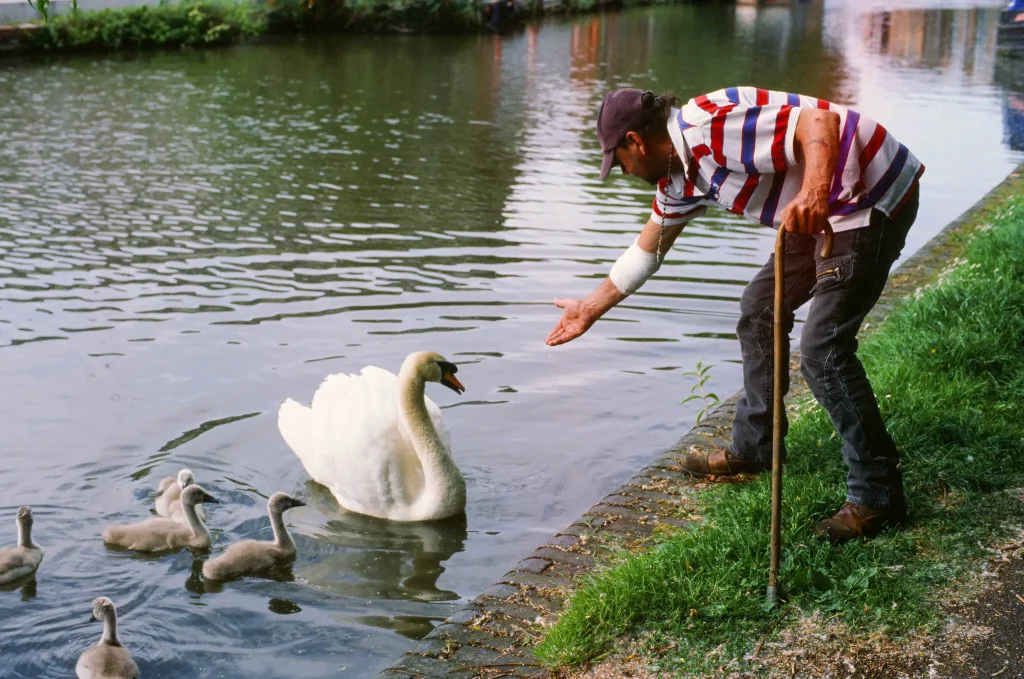
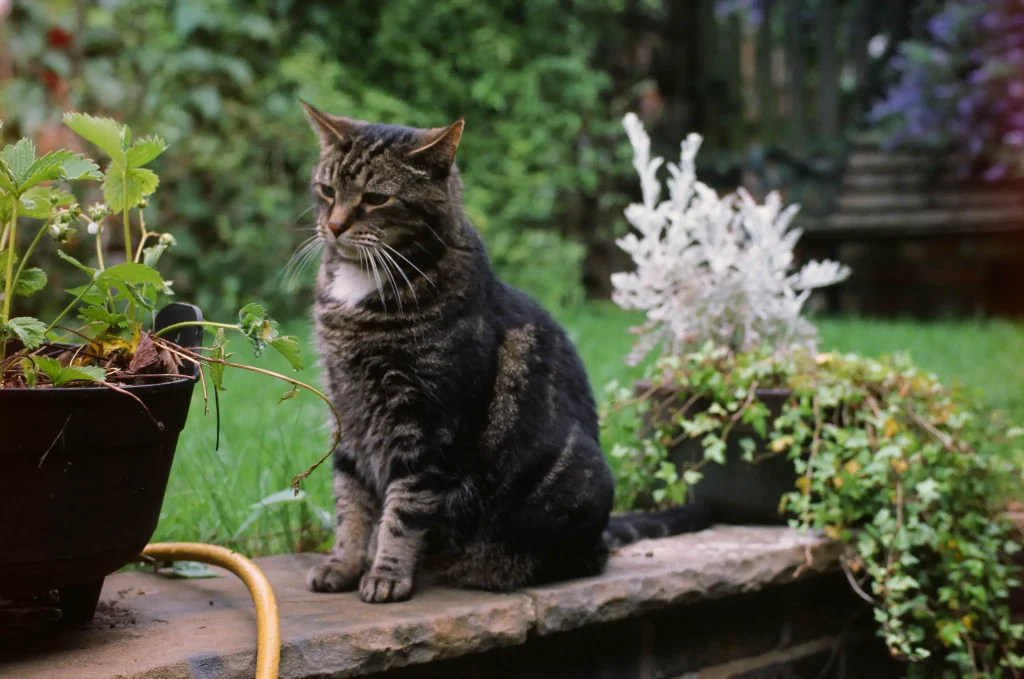

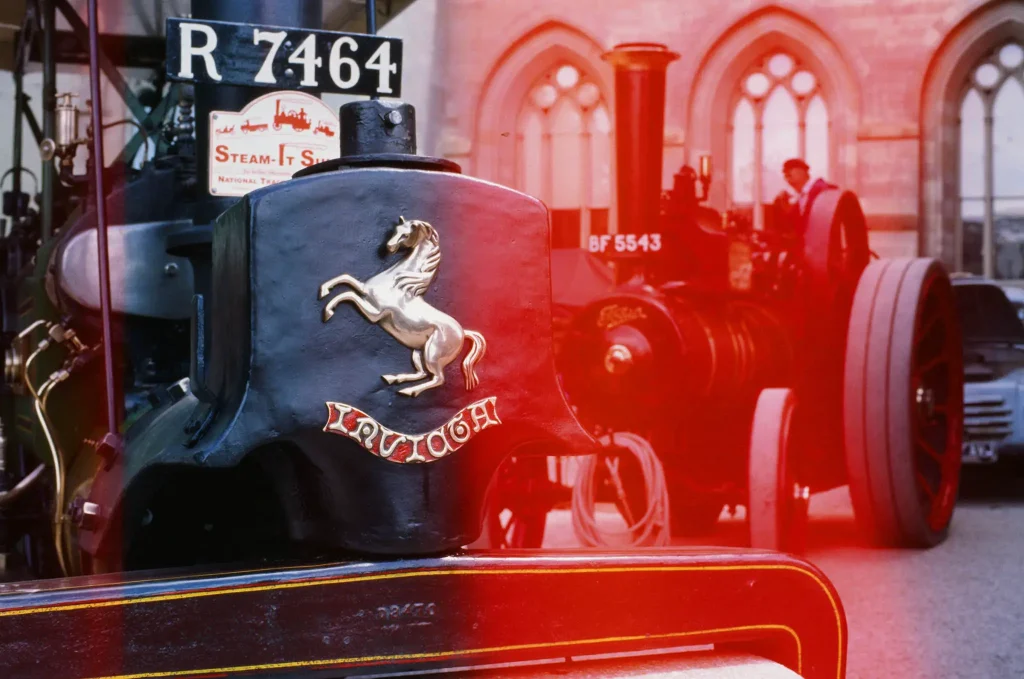
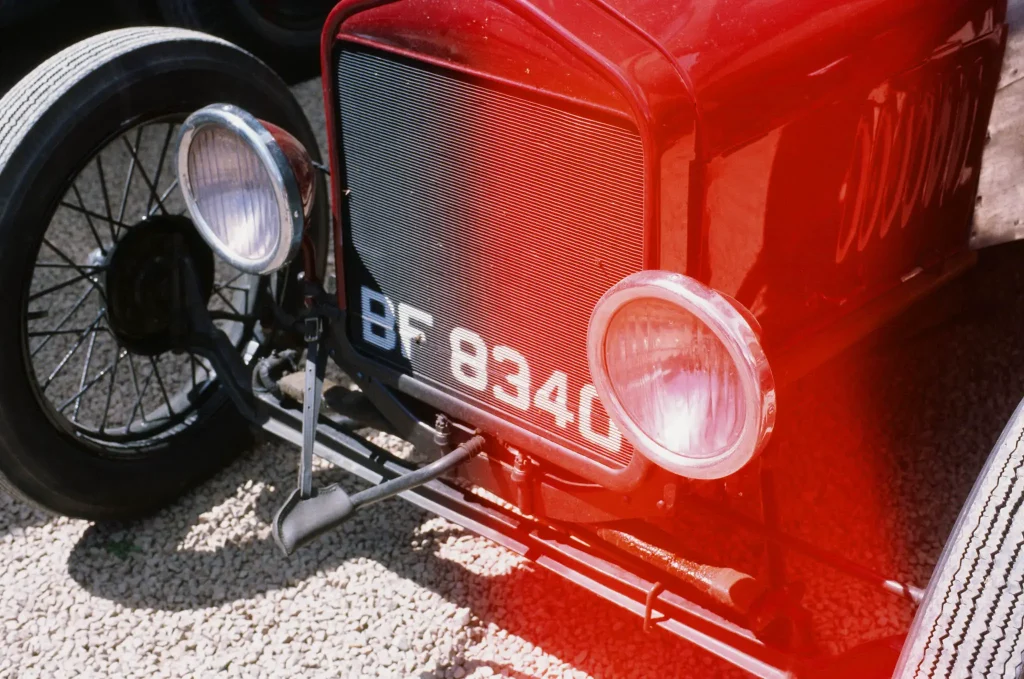
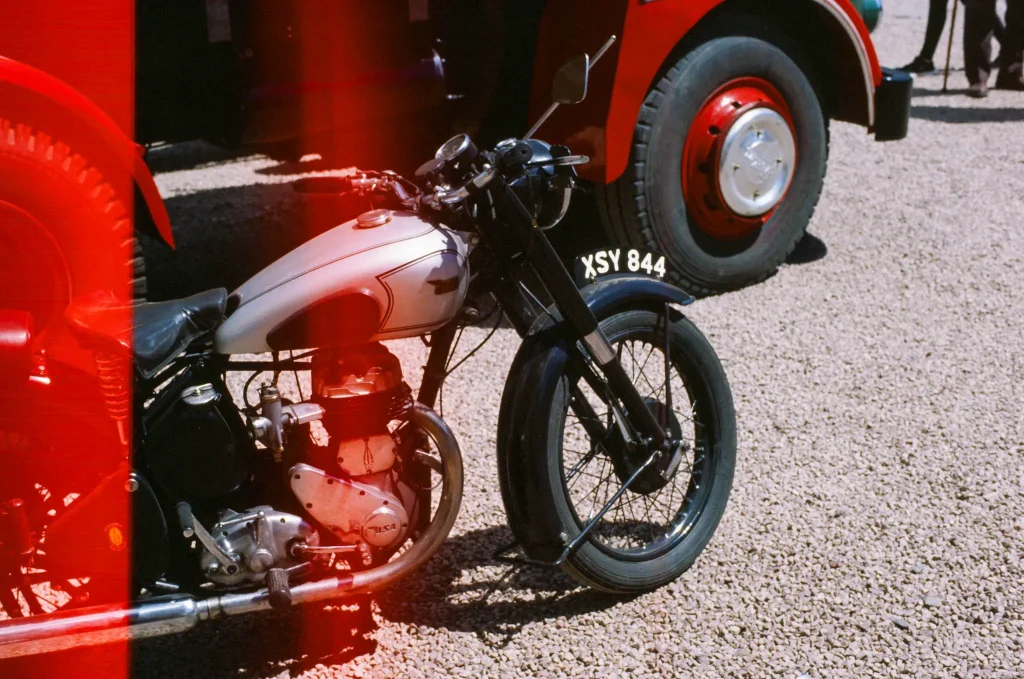
Later Kodak Portra 400 shots
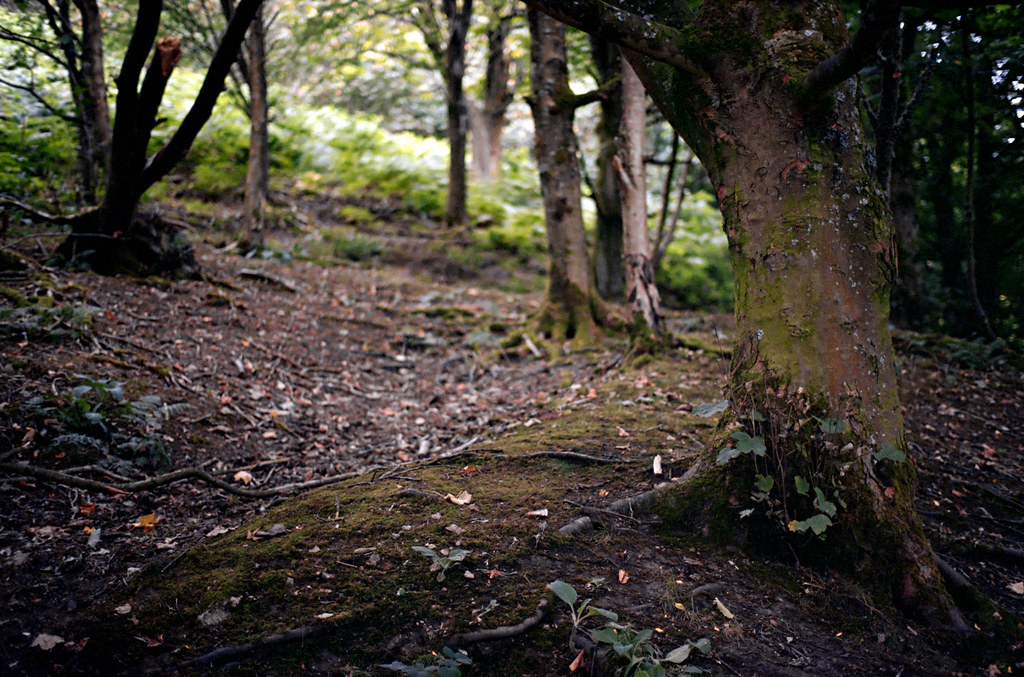
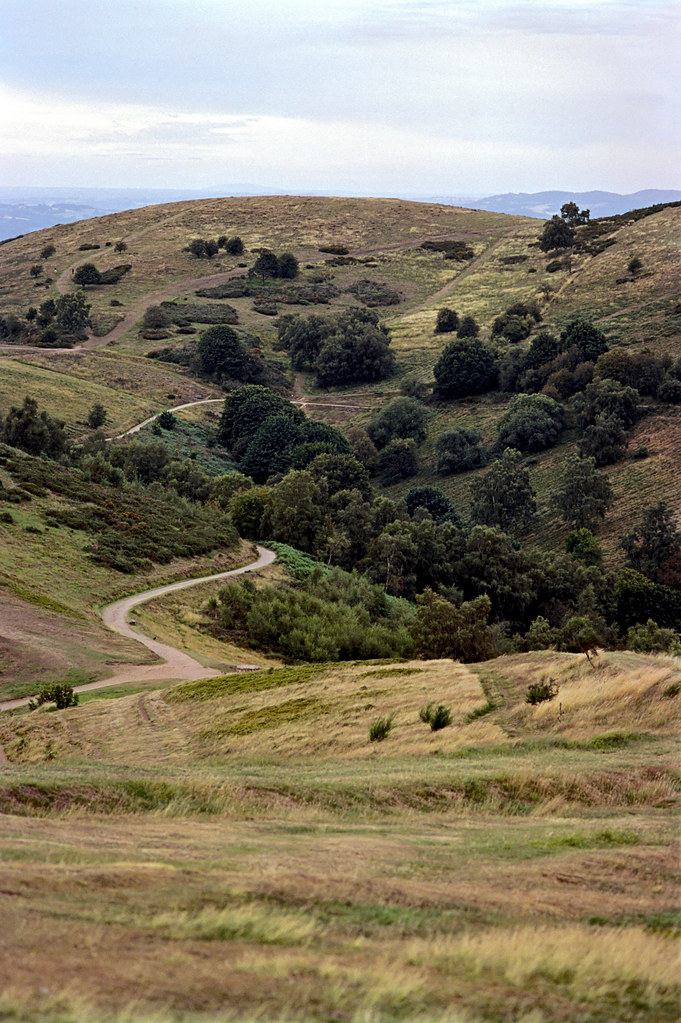
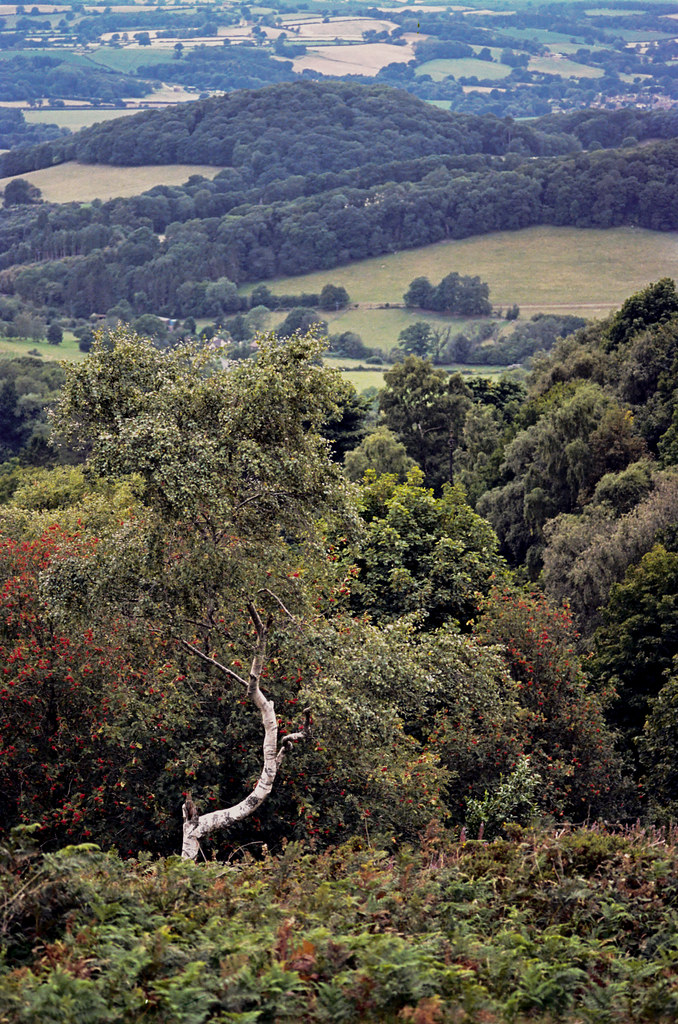
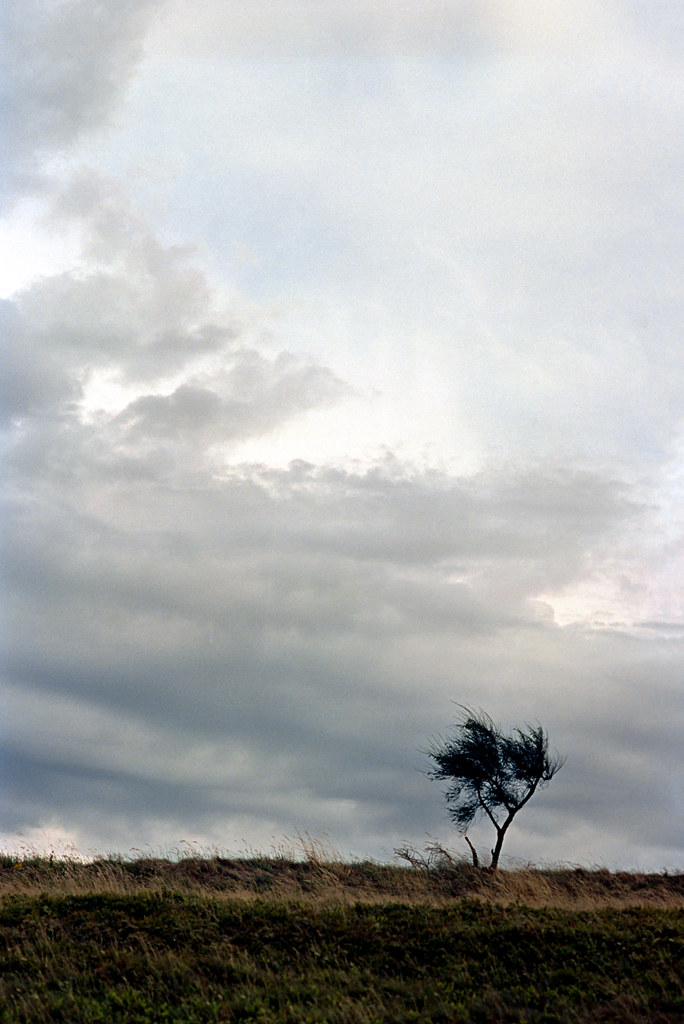
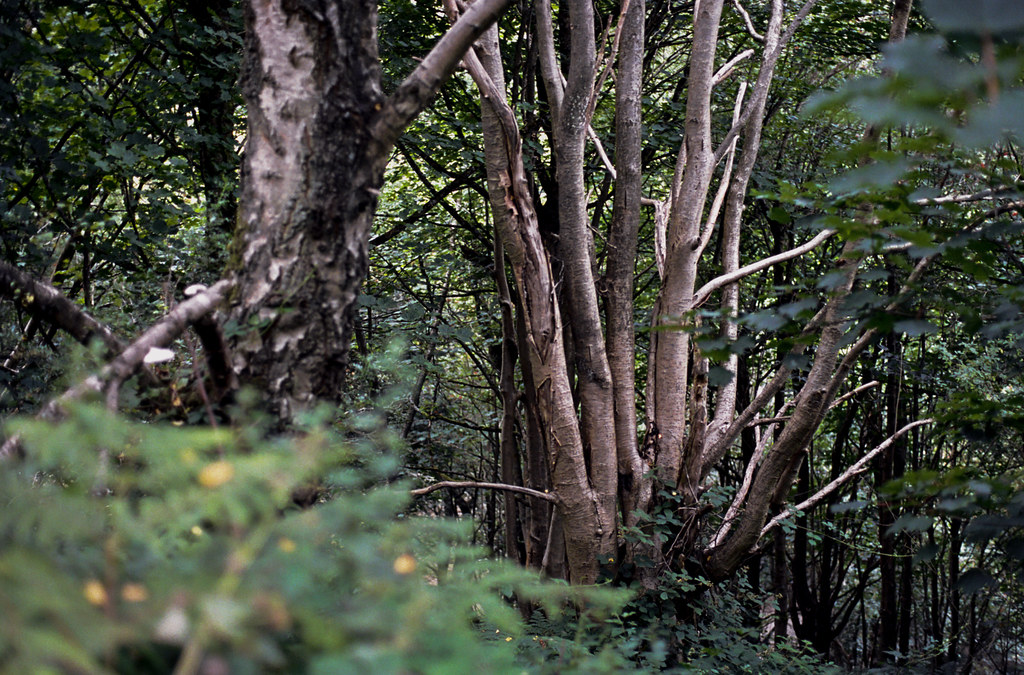
Contax RTS – Final thoughts
I must admit, despite the shortfalls that accompany it, the complete lack of shutter lag and hair-trigger shutter button makes for a really enjoyable shooting experience. I did find the lack of exposure lock a little off putting, but I think if I were to commit to this camera, the dial layout would eventually win me over and overcome the shortfall.
It’s hard to argue against the fact that the Contax RTS also feels very nice in the hand. This era of Contax cameras just have a feel to them that appeals to me. It’s one of the things that pains me about the fact that I just don’t got on with the G-Series kit.
Unfortunately, like the G-Series kit, the Contax RTS is also entirely reliant on batteries. A fact that makes me feel increasingly twitchy – these cameras aren’t getting any younger. I also have very little Contax context – that is to say I haven’t tried any of the other SLRs in the range to compare it to. Though of all of them that I’ve read about, the S2 looks like the one I would likely punt for. Either way though, I have definitely enjoyed both experiences I’ve had with the Contax RTS.
Share this post:
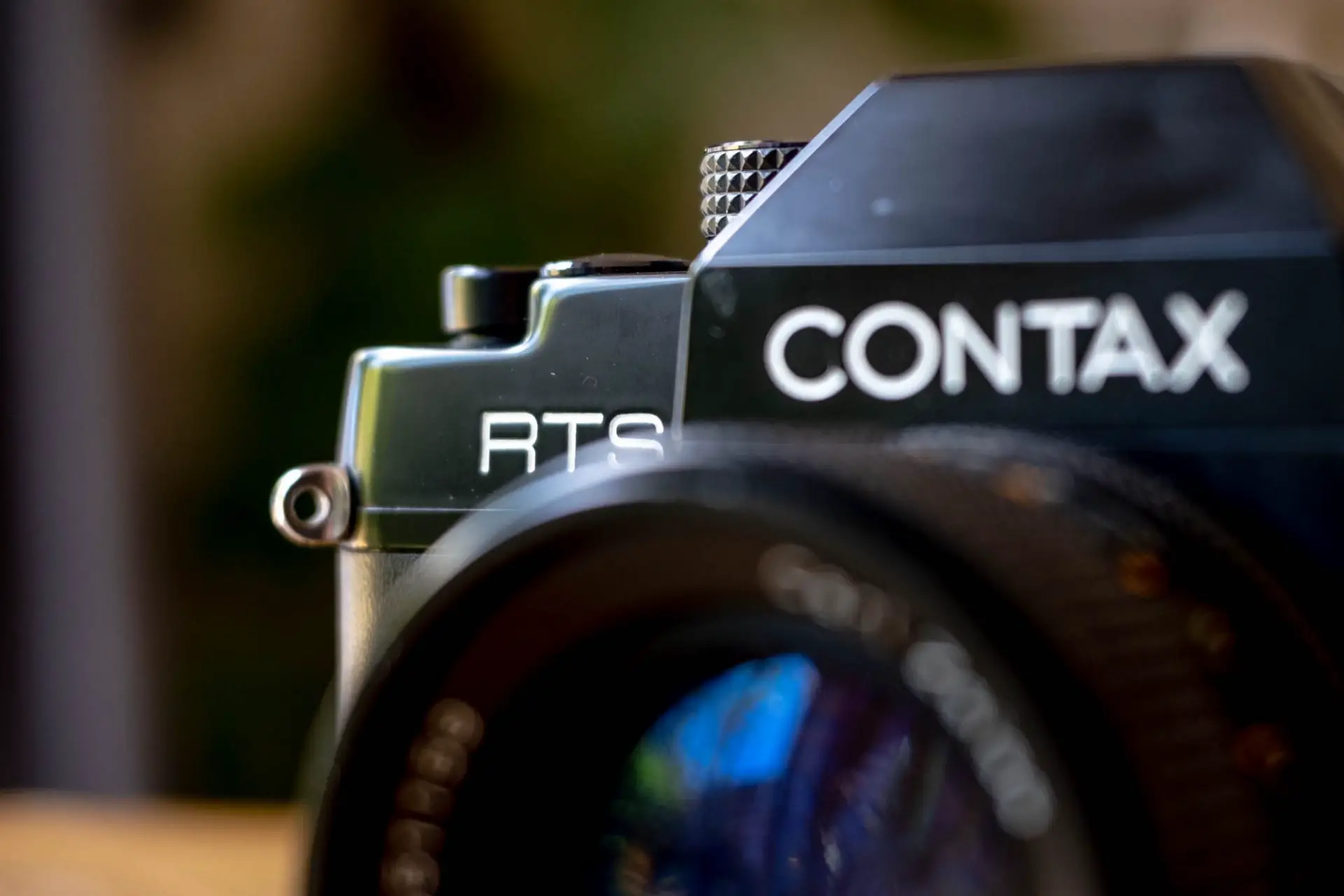








Comments
Steve on Contax RTS Review – Second Time Lucky
Comment posted: 10/08/2020
Same solidity, same elegant feel, just more to like feature-wise. It will also accept a nice matching motor winder. I've owned mine for a few years and immediately wished I'd discovered Contax SLRs sooner.
Cheers, and stay well and safe,
Steve
P.S. If an RTS II does not materialize soon enough, you won't go wrong with the 139 Q which is a slightly scaled down version of the RTS II dating from about same period.
Adrian Cullen on Contax RTS Review – Second Time Lucky
Comment posted: 10/08/2020
The Contax Aria is fully featured with spot/matrix metering and has a data back which can print SS and f numbers in the spaces between frames- very cool. It's shutter release is a bit laggy but its the quietest Contax I have. For mechanical purity at a sane price the Yashica FX3-Super 2000 is exceptional and of course fits all C/Y glass.
Finally the 139Q has been a faithful companion with great ergonomics even if it's feature list feels a little sparse. Its great to shoot with. C/Y Zeiss 28/35/45/50/85 and 135 glass are as good as they say.
Comment posted: 10/08/2020
Barry Reid on Contax RTS Review – Second Time Lucky
Comment posted: 10/08/2020
As to the Zeiss lens prices, yeah, it's tricky. You can still get some decent deals but I'm very glad I built my set (16 lenses all 3 Mutar converters) a few years back.
Sroyon on Contax RTS Review – Second Time Lucky
Comment posted: 10/08/2020
On a separate note, I'd enjoy reading your thoughts on the Sonnar 100/3.5, and in particular if you feel medium-tele Sonnars render differently than normal Sonnars (Jeremy I hope you're reading this!)
Christof on Contax RTS Review – Second Time Lucky
Comment posted: 10/08/2020
Philippe Steelandt on Contax RTS Review – Second Time Lucky
Comment posted: 10/08/2020
they were the "Rolls-Royce" of the 35mm cameras.
I worked then for a chemical company (agricultural department of Dow Chemical France) , building up a photographic archive for their publishings.
The photos had to be token on reversal film, mostly "on the field" and I took a lot of crop-diseases with my macrolens.
Reversal has a small latitude of exposure.
The RTS (Real Time Shutter) system was a bless
the AE-lock sprocket permitted a quick lock on medium grey value.
The value was kept in memory and every change of f-setting triggered an accurate speed value... (between the classic 30-60-125-250...) with sometimes very odd numbers.
I always could count on the accuraty of the system.
And, the Zeiss lenses were outstanding.
2 Years ago I bought a 1981 Contax 137 MD (the one without manual speed settings)
What a joy to lock the light value and then vompose your shot.
Triggered by the 137, I could buy a 1937 Contax II with a (Yes Hamish) Sonnar 50mm 1.5
It waés out of focus and I send it to Chris (Skyllaney) altogether with another Sonnar - a LTM 50mm 1.5 for calibration and resoration (for the LTM)
ok... I am a Contax and Zeiss fan ;-)
Huss on Contax RTS Review – Second Time Lucky
Comment posted: 10/08/2020
I had the RTS, then the RTS II after the RTS electronics failed. The RTS II? Failed too... And so ended my love affair with Contax..
John Duder on Contax RTS Review – Second Time Lucky
Comment posted: 11/08/2020
I still have that RTS, as well as a number of later bodies, and a range of lenses: and while the RTS II offers shutter lock and exposure lock, it feels like a bit of a dilution of the purity of the original idea. A bit like fitting an auto gearbox to a Porsche 911, to lean on the ergonomics, which remain exemplary.
Mine is now a well-brassed working camera - even in retirement, the RTS with an 85mm Planar feels like a camera for serious business. It has everything that you NEED in a camera.
jeremy north on Contax RTS Review – Second Time Lucky
Comment posted: 11/08/2020
The Contax 139 is nothing like the RTS other than the obvious Contax family look, it is exactly the same camera as the Yashica FX-D but in a nicer skin. The Yashica FRI is similar in function to the RTS and uses the same innards, it has a wonderful layout with the shutter speed dial in the traditional place.
The S2 is a lovely camera, my favourite 35mm SLR and is 100% mechanical.
Of course you may borrow the Sonnar for as long as you need, I hope you enjoy using it. As Sroyon said, we look forward to a review.
Timothy Gasper on Contax RTS Review – Second Time Lucky
Comment posted: 12/08/2020
Sciolist on Contax RTS Review – Second Time Lucky
Comment posted: 14/08/2020
Comment posted: 14/08/2020
Contax G1 vs. Contax G2 – The Photography Professor on Contax RTS Review – Second Time Lucky
Comment posted: 15/07/2021
Comment posted: 15/07/2021